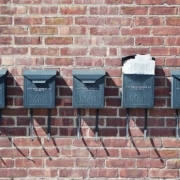Leverage Behavioral Science to Improve Your Direct Mail Response Rates
Nevermind the naysayers claiming that direct mail services are dying! In many ways, direct mail is healthier than ever. A variety of studies have been conducted lately into constructing better packaging that encourages response, and it’s allowing marketers to get ever-increasing direct mail response rates.
Direct mail already has a far higher response rate than email, at roughly 3.4% versus email’s .12% rate. Plus, as spam filters and inbox personalization continue to segment people’s email boxes, the fight to be seen at all is becoming a tough battle.
Or, by utilizing some of the latest research into direct mail, you can boost your response rates with better packaging and content inclusion!
Tricks For Boosting Your Direct Mail Response Rates
1 – Less is more, on the outside at least.
Consumers are largely put off by colored envelopes, blatant teases, and other false-pressure incentivization. They’re seen as being manipulative and indicative of a mass mailing. In some cases, even including a company’s logo will decrease response rates, in companies with a poor reputation.
That said, it’s difficult to argue that a plain white envelope is a good option, from a marketing standpoint. It may simply be the least-bad option in certain cases.
2 – People want personalization.
One of the biggest factors increasing response rates was even the appearance of actual human interaction in the creation of the letter. Merely having a real gum-backed stamp, as opposed to bulk “pre-paid” machine stamping, increases response rates.
Likewise, another huge attention-getter was the inclusion of a yellow Post-It note with what appeared to be a handwritten note politely asking for a response. This is theorized to play to people’s sense of social obligation, by implying real human interaction.
While it hasn’t been specifically studied, this would suggest “personal touches” on the outside envelope could also boost direct mail response rates, if they can be made to seen authentic. (Or just hire an intern to write on envelops for awhile…)
3 – Use chunking to create small steps.
“Chunking” is a term used in the behavioral sciences to describe how humans tend to break down complex tasks into smaller steps. It’s also a good way to induce people into a large undertaking, by leading them through several very small steps without fully revealing the bigger picture.
After all, no one gets to see how much paperwork is due until after they decide to buy a house.
Don’t use direct mail services to encourage people to “Buy now!” That’s too big of a cognitive jump. Use them to encourage smaller actions, such as requesting more information, filling out a survey, or just sending in for a coupon book.
4 – Be tactile.
One of the single biggest advantages of direct mail over email is that it’s truly physical. When someone is opening and manipulating a letter, most or all of their attention is necessarily on the letter itself. Physical mail utilizes more senses and more parts of the body.
So, leverage this! Think about the sensory experience of your letter and whether, for example, the inclusion of different-feeling materials might increase engagement. For example, soft materials like felt or a textured paper might draw higher responses from any demographic groups.
On the same note, mailers with a “puzzle box” aspect of having multiple items inside to open/manipulate also do better, likely because they make a game out of the process.
Direct Mail Services Keep Getting Better
There are a lot of benefits to direct mail, so don’t think it’s dying. New research makes it clear that it’s only growing as a marketing tool.
If you want your direct mail response rate to continually increase, then it makes sense to work with direct mail pros who’ve been in business for a long time. Give One Stop Mail a call at 602.233.3003 or reach us here.












Leave a Reply
Want to join the discussion?Feel free to contribute!